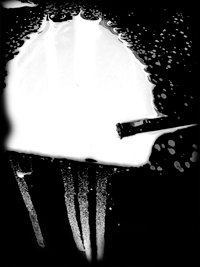

| KONTSEPTSIOON/conception |
| AJAKAVA/schedule |
| WORKSHOPID/workshops |
| AJALUGU/history |
| TOETAJAD/sponsors |
| KONTAKT/contact |

Estonian Arnold Schoenberg Society
SYMPOSIUM PERFORMANCE & TIME
26.01.2007 11.00 Pärnu, Endla theatre ÄRKLISAAL
lecture
[EE]
Mart Humal
BARBARA VON TISENHUSEN: OPERA AND LIBRETTO
Barbara von Tisenhusen (1967–68) is the first completed opera by Eduard Tubin. It is based on a short story (with the same title) by the Finnish-Estonian writer Aino Kallas, published originally in Finnish in 1923. In the following year it appeared in Estonian, translated by the Estonian writer Friedebert Tuglas (1886–1971). Barbara von Tisenhusen is based on historical events taking place in sixteenth-century Livonia, during the last decade before the war between Russia and Livonia (1558–1561).
The opera’s genesis is well recorded in Eduard Tubin’s correspondence and interviews. The idea to create an opera based on the short story of Aino Kallas also belonged to the producer Arne Mikk, who also proposed Jaan Kross as the librettist. Jaan Kross completed the first version of libretto at the end of July 1967. After receiving it, the composer outlined his proposals with regard to the extension of the libretto. On the base of these proposals, the final version of libretto (dated October 10, 1967) was completed.
The initial version of libretto contains a prologue and three acts, in the final version of the libretto, there are four acts; in the opera itself, there are three acts. In both versions of the libretto, the chorus of pursuers (which corresponds to the Introduction of Act 3 in the opera) makes up a separate scene, and the opera’s first scene (wedding ball) is divided into two scenes. In the initial version of the libretto, the opera’s fifth scene (the church scene) is also divided into two scenes. Entirely missing from the first version of the libretto is the opera’s fourth scene, the bear-baiting – one of the dramatic high-points of the work.
In the final version of the libretto, compared to the initial version, the first two scenes have been extended most of all. In scene 1, it is made through the addition of choral passages (missing in the initial version), in scene 2 – through the addition of Barbara’s dialog with the Boy and the episode of playing dice. In scene 3, the Barbara’s arioso is missing from the initial version of the libretto. In the final version of the libretto, Scenes 5 and 6 of its initial version are combined into one single scene.
Thus the first version of the libretto (in which both the choral passages of Scene 1 and the entire bear-baiting scene are missing) contains only one choral passage – the chorus of pursuers from Act III. Therefore it seems that the initial version of the libretto would be more suitable for a chamber opera rather than an opera with extensive symphonic development.
  |
|
|||||||||
|
|
Estonian Arnold Schoenberg Society |
||||||||